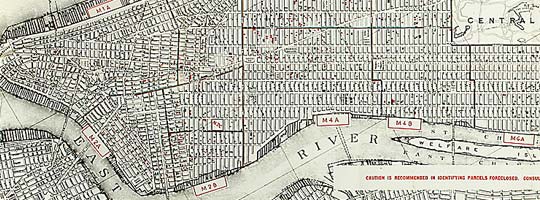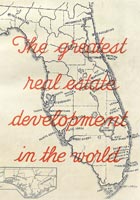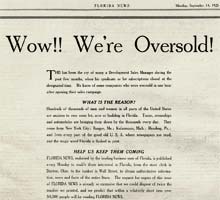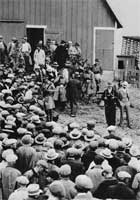The Forgotten Real Estate Boom of the 1920s
The famous stock market bubble of 1925–1929 has been closely analyzed. Less well known, and far less well documented, is the nationwide real estate bubble that began around 1921 and deflated around 1926. In the midst of our current subprime mortgage collapse, economists and historians interested in the role of real estate markets in past financial crises are reexamining the relationship of the first asset-price bubble of the 1920s with the later stock market bubble and the Great Depression that followed. Limited data on 1920s home prices and foreclosures means that many questions remain unanswered.22 Historical trade publications like the weekly New York Real Estate Record and Builder’s Guide, of which Baker Library holds a sixty-year run, allow researchers to fill in the blanks. The implications of early findings may challenge conventional wisdom about the factors that caused and prolonged the Great Depression.
In the 1920s, Florida was the site of a real estate bubble fueled by easy credit and advertisers promoting a lifestyle of sunshine and leisure. Contemporary accounts describe a collective madness that consumed Florida investors: city lots in Miami were bought and sold as many as ten times in a single day. The received wisdom holds that a 1926 hurricane pricked the bubble, but house price indices and construction data suggests that the boom and bust was in fact a nationwide phenomenon whose causes and consequences remain unclear.23
The housing price downturn in 1926 led to a rise in the foreclosure rate. Foreclosures were the cause of considerable hardship in the 1920s, but public attention focused on the plight of family farms, not residential real estate. Heavily mortgaged during World War I, in expectation of continued high prices, many farms were overwhelmed by the postwar collapse of the agricultural commodities market. Yet foreclosures of residential properties also increased in 1926, rising steadily through the stock market bubble and peaking in 1933.24
- Marc A. Weiss, “Real Estate History: An Overview and Research Agenda,” Business History Review 63 (1989): 241–282.↖
- Leo Grebler, David M. Blank, and Louis Winnick, Capital Formation in Residential Real Estate: Trends and Prospects (Princeton: NBER and Princeton University Press, 1956), p. 350; Historical Statistics of the United States Millennial Edition Online. Tables Dc826–827 and Dc828.↖
- Historical Statistics of the United States Millennial Edition Online. Tables Dc1555 and Dc1557.↖




